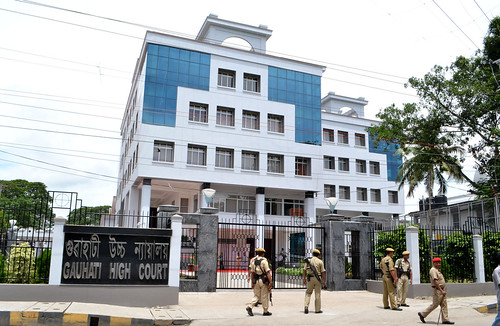The Gauhati High Court has taken an unprecedented step to directly oversee the construction of a crucial bridge in Mizoram, ensuring the timely completion of a long-delayed project that holds significant importance for the state’s infrastructure. This decision comes as a response to public interest litigation (PIL) filed by concerned citizens and activists, urging the court to intervene in the prolonged delay and inefficiencies surrounding the bridge’s construction.
Background of the Bridge Project
The bridge in question, located over the Tlawng River, connects key districts in Mizoram and is a lifeline for several communities. It is part of a larger plan to enhance connectivity in the northeastern state, which has long suffered from inadequate infrastructure and transportation facilities. The bridge is vital for transporting goods, commuting for work, and ensuring access to healthcare and education for people living in the remote regions of Mizoram.
The project was initiated several years ago, with multiple deadlines for its completion set and subsequently missed. The delays have been attributed to a range of factors, including inadequate funding, adverse weather conditions, issues with land acquisition, and bureaucratic hurdles. However, the prolonged stalling of construction has severely affected the livelihoods of those dependent on the bridge and hampered the economic development of the region.
Public Outcry and Legal Intervention
Amid mounting frustrations from the local population, a group of citizens filed a PIL in the Gauhati High Court, seeking the court’s intervention to expedite the construction of the bridge. The PIL highlighted the hardships faced by the people due to the lack of a functional bridge, including increased travel times, higher transportation costs, and the challenges posed by flooding during the monsoon season. It also pointed to the broader issue of inadequate infrastructure in Mizoram and called for accountability from both state and central authorities.
During the hearings, the petitioners emphasized the government’s repeated failure to adhere to timelines and cited the potential benefits that the bridge could bring in terms of trade, commerce, and social welfare. The court, recognizing the urgency of the matter, has now decided to oversee the project’s progress to ensure that there are no further delays.
The Gauhati High Court’s Decision
In its order, the Gauhati High Court mandated that a special committee be formed to monitor the construction of the bridge. This committee will consist of representatives from the state’s Public Works Department (PWD), the central government, and independent experts in civil engineering and infrastructure development. The court has also directed the Mizoram government to submit regular progress reports on the construction to ensure transparency and accountability at every stage of the project.
The court’s decision marks a significant moment in the judicial oversight of infrastructure projects, as it underscores the judiciary’s role in ensuring that public welfare is not compromised by bureaucratic inefficiencies or poor governance. It is a move aimed at restoring public trust in the authorities and demonstrating that the legal system can step in when essential projects are neglected.
Government’s Response and Challenges Ahead
In response to the court’s ruling, the Mizoram government has welcomed the decision, stating that it remains committed to completing the bridge as quickly as possible. The state’s Public Works Minister acknowledged the delays and assured the court that all necessary measures would be taken to expedite construction. He also pointed out that efforts were being made to address funding shortages, secure additional resources, and resolve any remaining land acquisition issues.
However, the construction of the bridge faces several practical challenges. Mizoram’s terrain, characterized by its hilly topography and frequent rainfall, makes large-scale infrastructure projects particularly difficult. Landslides, flooding, and logistical hurdles have all contributed to the delays, and these natural obstacles are likely to persist in the future.
Moreover, the question of funding remains a key issue. While the Mizoram government has pledged to allocate additional resources to the project, there is still uncertainty over whether sufficient funds can be secured in time to meet the new deadlines set by the court. Coordination between the state and central governments will be critical in ensuring that the necessary financial backing is provided.
Impact of the Bridge on Mizoram’s Development
Once completed, the bridge will have a transformative impact on the region. It will significantly reduce travel time for thousands of residents, making it easier to access essential services such as healthcare, education, and markets. The improved connectivity is expected to boost the local economy by facilitating trade and attracting investment in industries like agriculture, tourism, and handicrafts.
In addition to its economic benefits, the bridge will also improve the state’s disaster preparedness. During the monsoon season, when roads and transportation networks often get cut off due to flooding, the bridge will provide a more reliable route for emergency services and supplies to reach affected areas.
The Gauhati High Court’s decision to oversee the construction of the bridge in Mizoram is a significant step toward addressing the infrastructure gaps that have long hindered the state’s development. While challenges remain, the court’s intervention offers hope that the project will finally be completed and that the people of Mizoram will soon benefit from improved connectivity and economic opportunities. This landmark decision also sets a precedent for judicial oversight in critical infrastructure projects, ensuring that public welfare remains at the forefront of governance.




